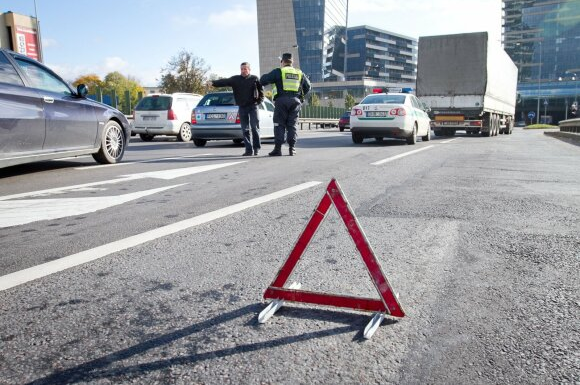Although various First Aid and Emergency Stops are required by the Road Traffic Code (KET) for every car, they are often purchased by the driver for safety reasons only because they are required by Technical Inspection (TA) Centers. Some drivers generally forget what is required to be in the car, so specialists have explained what it is necessary to get in the car and how to make it easier to stop unexpectedly.
Stopping on the road in the event of a broken car or wanting to help another driver in an accident occurs to more than one road user. Traffic safety experts are terrified to say that when they get out of the car, drivers forget the basic rules of safety – don’t stop as close to the right as possible, don’t make them visible, don’t sign a local emergency stop sign. These behaviors, to say the least, can lead to crippling misery.
Thousands of fines handed out not only to drivers but also to people on the spot. The man failed to take proper care of his safety, mark the stopping place, and was killed in a car overtaking a parked vehicle. How to stop safely Traffic connoisseurs emphasize that if a car is unable to continue driving, has broken down, or if it is to help another road user, it is best to leave their vehicle where it is safe to take it to a “pocket” yard, or if not possible, stop as close to the right edge of the road as possible.
Getting out of the car is the driver’s only obligation to make sure that it does not obstruct other road users and does so safely. First and foremost, it is important to wear a reflective, bright-colored reflective vest, even when the time of day is not dark. Such a vest will make it easier for other road users to spot the person. For this reason, it is emphasized that the vest must be at hand and not placed somewhere far away.
Before leaving, it is recommended to look at the rearview and side mirrors, wait for passing traffic and get out of the car. If this is not possible safely, the driver should exit through the passenger side door. Other road users must be informed of the obstacle on their way so that an emergency stop sign is required. In the settlement, such sign shall be kept at least 25 meters from the obstacle, and in the highway – at least 50 meters. It is also important to remember that a person getting out of a car cannot run down the driveway – he has to stick to the sidewalk as far as he can. If it is not possible to pull the car safely or if it is unsafe on the street, it is advisable to call for police officers who will be able to mark the location of the accident by other means.
What’s in the car KET requires every vehicle to have a first-aid kit, a bright-colored reflective vest with reflective materials, an emergency stop sign, and a fire extinguisher, but experts note that that’s not all. TA centers and traffic safety experts note that all of these centers.
TA centers and traffic safety experts note that all of these attributes should be placed in a location so that they can be quickly accessed when needed. Because it is a common mistake for drivers to put a fire extinguisher in the boot. After all, approaching the fuel tank, which is normally located on the rear of the car, can be extremely unsafe, and the time you spend searching for a fire extinguisher may not be of benefit to you, but the spread of the flame. When choosing a fire extinguisher, drivers often make the mistake of choosing a smaller and substandard one. It is stipulated that a passenger car should have a capacity of at least 2 kg. It is also important to have a first aid kit and a reflective vest with reflective tape at your fingertips, both during the day and at night, so other drivers need to see you, as there is a fixed case of someone getting out of a car at night.
Complementary tools useful As experts have noted, though optional, every driver should have a flashlight in his car so he can not only light up the road when needed but also be more visible to other road users. It is also important that in the event of a breakdown, you should not only take care of the vehicle but also your safety. Testing company representatives advised that each driver should make sure he/she had the right medications, such as antihypertensive drugs or other medicines, according to their needs. In the event of a disaster, it is also important that the victim is provided with assistance as soon as possible, and in those cases where the victim begins to have arterial bleeding, every second is crucial. Specialists note that in such a case, the wound should be pressed as soon as possible, or in the case of a limb, tightly wrapped around the wound. It is for these emergencies that the kit must be easily accessible. It is also recommended that every driver should wear work gloves, tow rope, headlight bulbs, and fuse kits in their car, and owners of older cars should take care of the oil, coolant and window fluid in advance. Information prepared in cooperation with the Lithuanian Road Administration under the Ministry of Transport and Communications.
